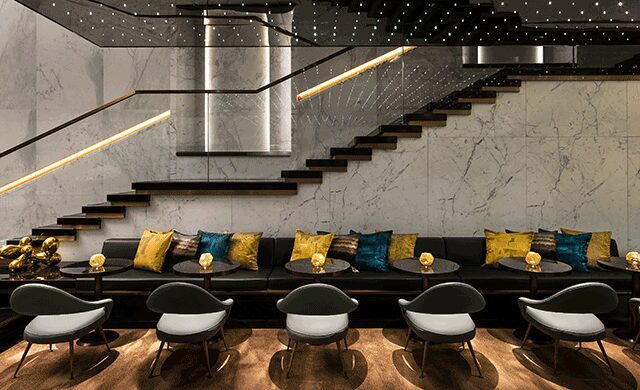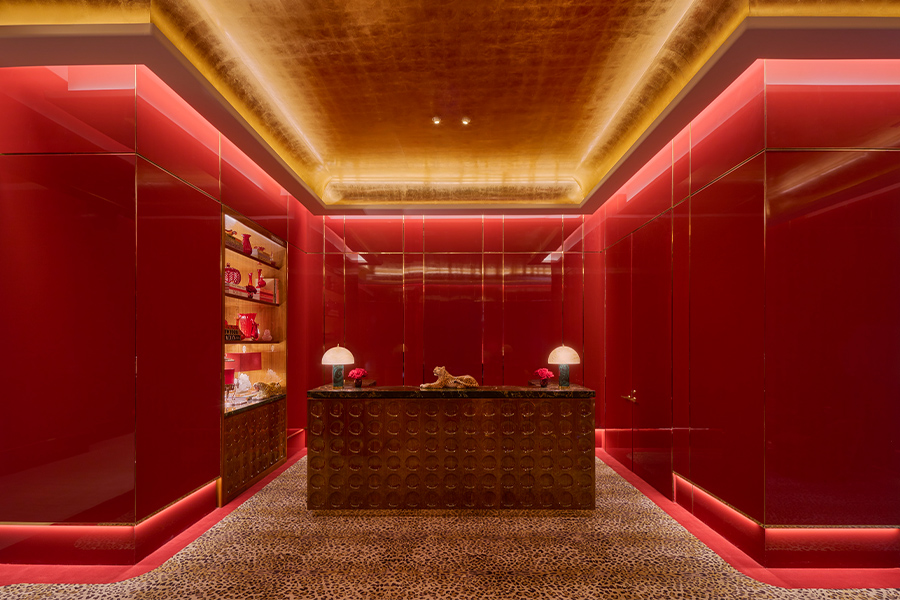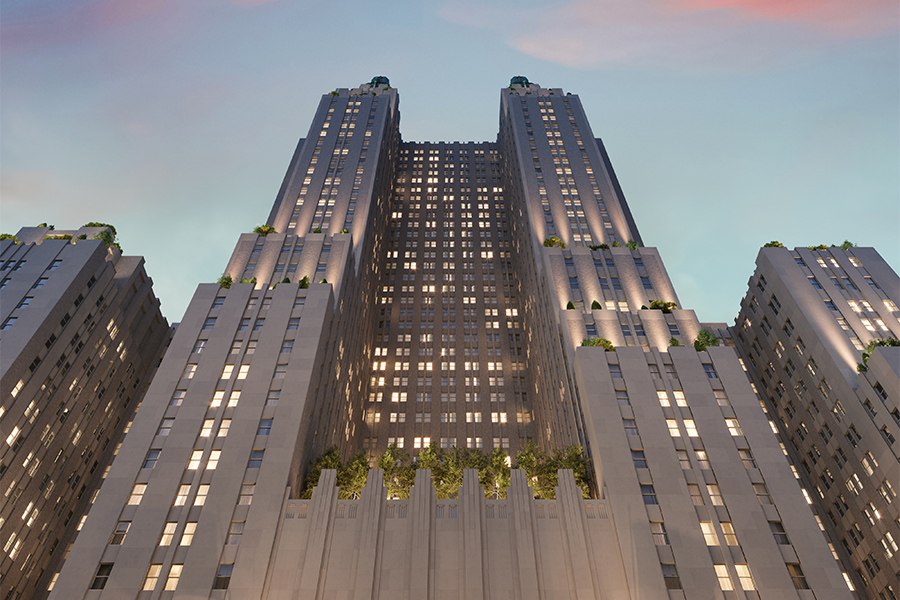Hong Kong was a very different town when the 27-story Murray Building opened in 1969. Civil servants driving to work in the city’s tallest government building at the time entered the structure via a ramped driveway. Flanked on both sides by steep roads, the building’s majestic ground floor arches and sun-shaded windows were architect Ron Phillips’ contributions to modern architecture. Nearly half a century later, it has a new lease on life as luxury hotel the Murray, the flagship property of Niccolo Hotels.
Working alongside local architecture firm Wong & Ouyang, and with the input of the 90-year-old Phillips, Colin Ward and his team at Foster + Partners first set about by researching the building’s background. “It is in an extraordinary location—in the heart of the city but also on the fringe, on a swathe of green,” notes Ward, a Hong Kong-based partner of the firm and the design architect in charge of the project.
To create an urban oasis, Ward left much of the exterior untouched, maximizing the ground and upper floors with terraces extending from restaurants Tai Pan and Garden Lounge, and a grand arrival porte-cochère. “The ground level was never used except for parking and services,” he reveals. “We cleared that away and highlighted the two to four-story high arches, giving them a sense of elegance.” The existing car ramp yielded a long main lobby with a sloped ceiling, which is now dressed in black and white marble and bronze stainless steel. South Korean artist Seon-ghi Bahk’s commissioned charcoal chandelier sculpture is found at its higher end, leading to lobby lounge Murray Lane and to the restaurants, located up a flight of white Carrara marble stairs.
Angled windows and a sawtooth perimeter compelled Ward to re-examine the typical layout for the 336 guestrooms, shifting his plan 45 degrees to embrace the building’s architecture. Each room takes on a cruciform shape, with rest and work areas by the windows, which were lowered to provide a framed view. “In the tradition of grand hotels, they feel residential,” notes Ward. Midcentury-style furnishings add comfort, with a number of thoughtful touches, including concealed outlets in bedside tables. “We used real, honest materials with a dignified Northern European aesthetic,” he adds.
Chinese restaurant Guo Fu Lou from local firm AFSO (Foster + Partners handled everything else in the hotel, including an indoor pool, gym, and small spa) will join signature eatery Popinjays when they both open this summer. The upscale rooftop restaurant is a bit of an anomaly in Hong Kong, where roofs are often neglected. Previously the domain of mechanical equipment, it will host a semiprivate dining room with a wraparound terrace that offers panoramic views, creating an inviting space “that goes to the heart of this project’s aspiration,” Ward states, “to give the Murray back to the city.”



